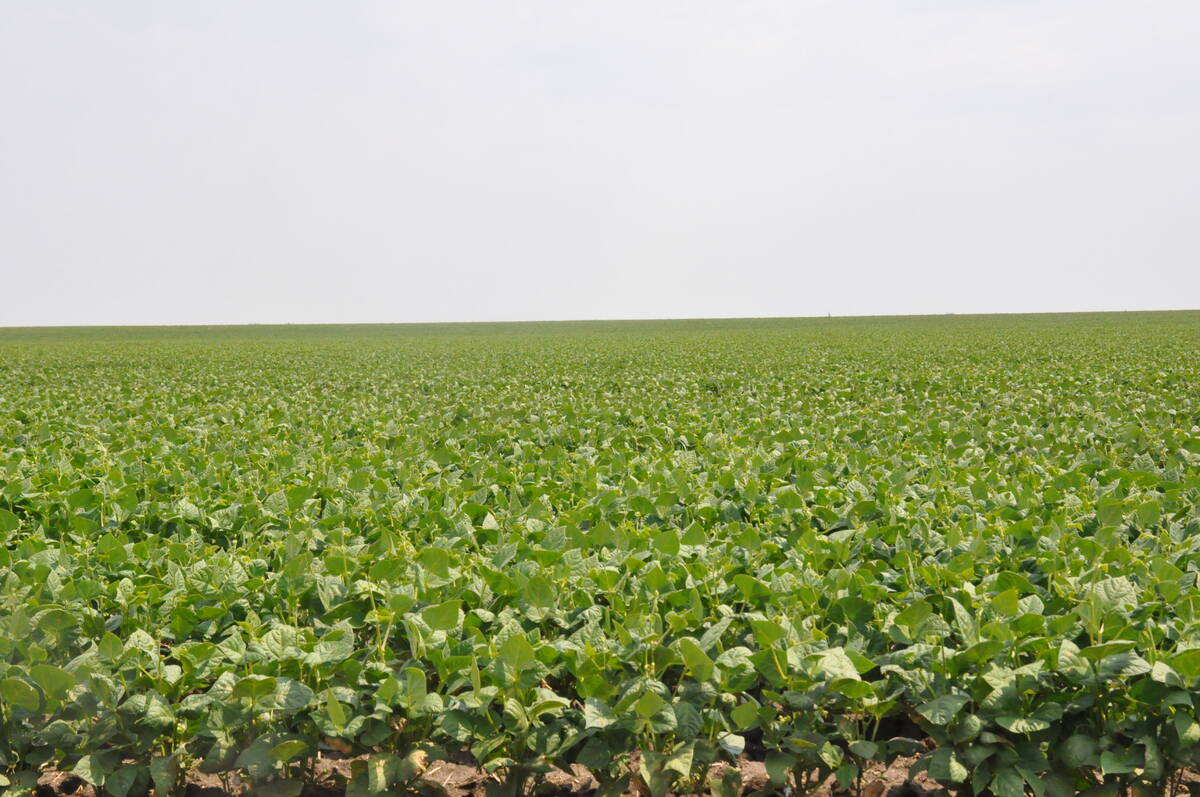Morris, Man., was closing up the ring dike around the town this week in preparation for a rising Red River swollen from weeks of rainy weather.
Denis Vermette raised his farm home in the community after the flood in 1997, but now fears flooding could cut off his access roads.
The river is higher than it was when it crested in the spring, he said.
The president of Ag Success Strategies Inc. said area crops are under extreme stress due to excessive moisture.
“Every day that goes by with the crops in a saturated condition, it gets worse,” Vermette said, citing the amount of yellowing in plants.
Read Also

Coloured bean production down, whites are up
Bean prices have been slumping and the outlook is for more of the same.
The soaked root system cannot take up any more moisture, he said.
Vermette said early seeded cereals are faring the best because they are more advanced and better able to handle the water.
“We’re now at a point where all the crops are really struggling.”
Vermette doubted this week’s forecast of hot, dry weather will help.
“The bulk of the damage is already done,” he said.
Don Dixon of Manitoba Agriculture said a sudden change in weather might do more damage.
“You don’t want to switch too quickly to hot, as the plants are not well adapted and it could add another level of stress to plants already stressed,” said the director of the crops branch.
Dixon said all farm areas in Manitoba are dealing with excess moisture, with the northern Interlake and northwestern areas receiving less rain than the south.
Canola crops could recover if they are in well drained areas, but flax does not tolerate moisture well, he said.
Wet conditions hampered seeding and drowned crops in low lying fields in Manitoba this spring.
Dixon estimated that 2.5 of 9.5 million farmed acres will not produce a crop.
“It’s getting to be a significant number,” he said.
Phil Thomas of AgriTrend Agrology cited the 279 millimetres of rain that fell in one storm at Shoal Lake.
“It’s like Manitoba turned into a swamp,” he said.
Plants are unable to grow when in saturated ground. Under such water stress, he said they often produce flowers prematurely in an effort to create seeds.
“That’s never a good sign.”
His advice for dealing with the unseeded acreage is simply to leave it alone.
“Don’t touch them except to control growth,” said Thomas, who noted it could take all summer to dry.
Fields are super saturated at all soil depths so keeping the land exposed will help it dry down before the snow returns, he said.
While the Interlake area crop is largely washed out for this year, there are excellent crops around Neepawa and Brandon in fields not flooded.
There’s a similar story in Saskatchewan, which also experienced steady rains last week.
Heavy rain fell from Outlook to Kindersley, with large tracts of land under water around Kindersley and Rosetown.
Some plants have yellowed and diseases are common there and across the Prairies, Thomas said, but overall, crops and pastures are rated good to excellent.
Crop development is on or ahead of schedule for this time of year, he said.
Despite damaging hail and rain in recent weeks in Alberta, growing conditions are excellent.
Crops and pastures are rated as good to excellent province-wide, with growers looking at strong potential for high yielding crops this season.














